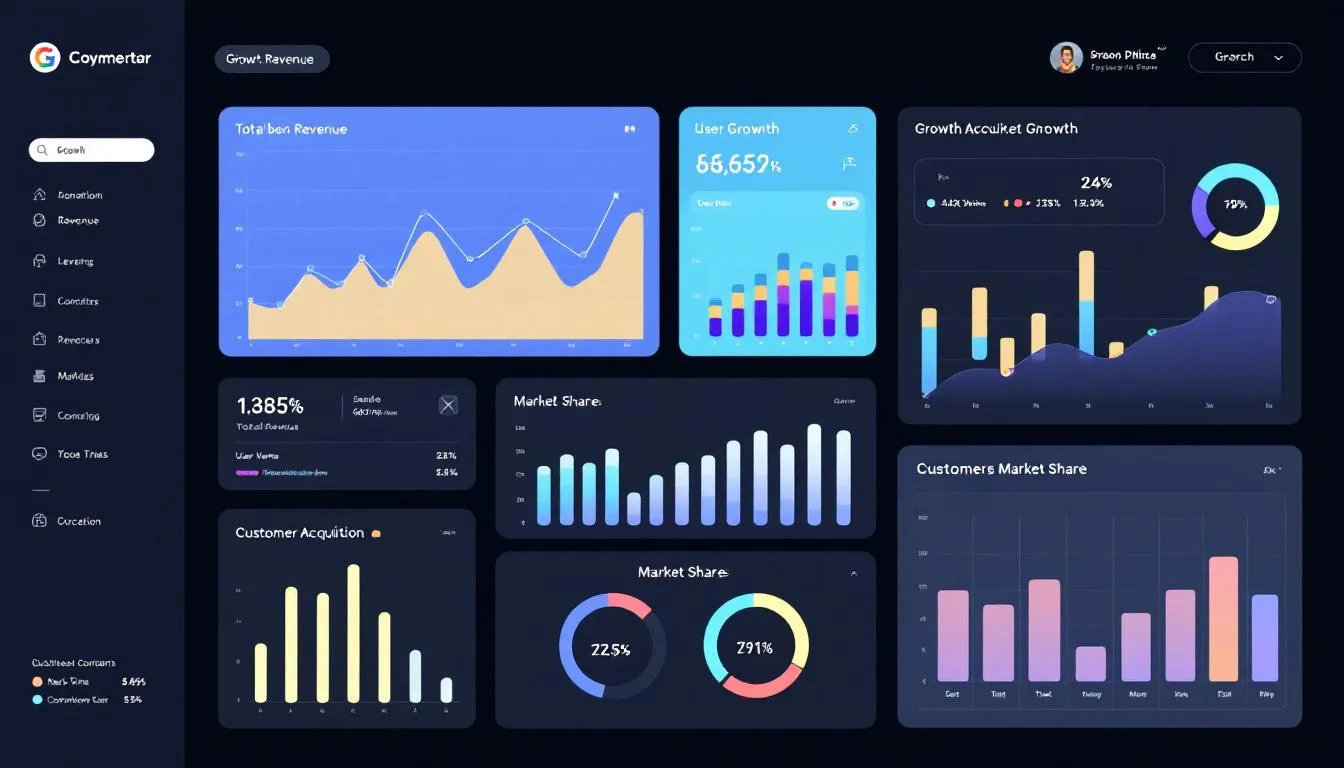
AI Agents to Convert Emails to Orders: Automating eCommerce Sales from Inbox to Invoice
Every day, eCommerce businesses drown in hundreds of order-related emails while their teams struggle to keep up with manual data entry and order processing. What if your business could automatically transform incoming emails into processed orders within minutes, not hours? AI agents to convert emails to orders are revolutionizing how businesses handle customer communications, turning the chaotic email inbox into a streamlined sales machine that operates around the clock.
The transformation from manual order processing to AI-powered automation represents a fundamental shift in operational efficiency. These intelligent systems use natural language processing and machine learning to understand customer intent, extract order details, and integrate seamlessly with existing business systems. The result is faster customer response times, improved customer satisfaction, and significant cost savings that provide a strategic advantage in today’s competitive marketplace.

How AI Agents Transform Email Orders into Automated Sales Processing
AI agents automatically classify incoming emails as product inquiries, order requests, or support tickets using natural language processing algorithms trained specifically for eCommerce terminology. These sophisticated systems can distinguish between a customer asking about product availability and one ready to place a purchase order, ensuring each communication receives the appropriate response pathway.
Real-time order processing extracts customer details, product codes, quantities, and shipping information from email content with remarkable accuracy. The ai agent scans through unstructured text, identifies key information patterns, and maps them to structured data fields that your order management system can process immediately. This eliminates the need for manual data entry while reducing human error that typically occurs during repetitive routine tasks.
Instant inventory verification and order creation eliminates manual order processing delays that frustrate customers and slow down your entire order process. The system checks stock levels in real-time across multiple warehouses, validates product availability, and creates confirmed orders in your system within seconds of receiving the email. This automation handles the entire order process from initial email receipt to order confirmation, freeing your customer support teams to focus on high value tasks that require human intervention.
Integration with ERP systems like Dynamics 365, SAP, and Shopify enables seamless order fulfillment workflows that connect email communications directly to your existing processes. These ai powered systems integrate seamlessly with your current technology stack, ensuring that automated order data flows correctly through your established business operations without disrupting existing workflows or requiring extensive system overhauls.
The Email Overload Problem: Why Manual Order Processing Fails Modern eCommerce
eCommerce businesses receive 500-2000 order-related emails daily across multiple channels and customer touchpoints, creating an overwhelming volume of customer communications that traditional manual processing simply cannot handle efficiently. Customer emails arrive through various channels including direct inquiries, marketplace communications, and distributor requests, each requiring different handling procedures and response protocols.
Manual email sorting causes 4-7% error rates in order entry, leading to $50,000+ annual losses for mid-size retailers through incorrect orders, shipping delays, and frustrated customers who take their business elsewhere. These error prone processes result in costly mistakes including wrong product shipments, billing errors, and inventory discrepancies that damage customer relationships and require expensive correction procedures.
Average response time of 4-6 hours for email orders creates customer frustration and abandoned purchases, particularly in today’s instant-gratification marketplace where customers expect immediate acknowledgment and rapid order processing. Slow manual review processes mean that by the time your team processes an order, the customer may have already found an alternative supplier who can respond more quickly to their needs.
Staff spend 30% of their time on repetitive order entry tasks instead of strategic customer relationship building, preventing your team from focusing on high value work that drives business growth. This misallocation of human resources means experienced sales professionals spend their time on routine inquiries and manual entry rather than developing customer relationships, identifying upselling opportunities, and pursuing strategic business development initiatives.

Intelligent Email Classification and Order Detection
Advanced NLP models trained on eCommerce terminology accurately identify order intent in 95%+ of emails, distinguishing between general inquiries, specific product requests, and ready-to-purchase communications. These ai models have been trained on thousands of customer emails to recognize purchasing signals, urgency indicators, and specific product requirements that indicate a customer’s position in the buying process.
AI handles poorly formatted emails, incomplete product descriptions, and mixed-language communications effectively, ensuring that even complex or unclear customer communications receive appropriate processing. The system can interpret partial product names, extract relevant information from lengthy email threads, and understand context clues that indicate customer purchasing intent even when the email format doesn’t follow standard templates.
Automatic detection of urgent orders, bulk purchases, and special requests for priority processing workflows ensures that high-value opportunities receive immediate attention from your sales team. The ai agent can identify keywords and phrases that indicate rush orders, large quantity purchases, or VIP customers who require special handling procedures and expedited processing.
Integration with email platforms like Outlook, Gmail, and customer service tools for seamless monitoring means the system works with your existing email infrastructure without requiring staff to learn new platforms or change their communication workflows. This compatibility ensures that incoming emails are monitored and processed regardless of which email platform your customers use to contact your business.
Automated Order Processing with Real-Time Inventory Management
AI agents extract order details including SKUs, quantities, shipping addresses, and payment preferences from email text with precision that exceeds manual data extraction in both speed and accuracy. The data extraction process uses sophisticated pattern recognition to identify product codes, understand quantity specifications, and parse shipping requirements even when customers use non-standard formatting or terminology.
Real-time inventory checks across multiple warehouses prevent overselling and stockout situations that damage customer relationships and disrupt fulfillment operations. The system queries inventory levels across all locations instantly, ensuring that orders are only confirmed when products are actually available and can be shipped within promised timeframes.
Automatic order confirmation emails sent within 30 seconds of email receipt with accurate delivery estimates provide customers with immediate acknowledgment and set proper expectations for order fulfillment. These confirmations include detailed order summaries, estimated shipping dates, and tracking information preparation, giving customers confidence that their order is being processed efficiently.
Smart handling of backorders, partial fulfillment, and alternative product suggestions when items are unavailable ensures that potential sales aren’t lost due to temporary inventory shortages. The system can automatically suggest substitute products, offer partial shipment options, or place items on backorder while keeping customers informed throughout the process, maintaining engagement even when primary products aren’t immediately available.
Intelligent Product Recommendations and Upselling
RAG (Retrieval-Augmented Generation) technology suggests complementary products based on order history and current trends, helping customers discover additional products that enhance their purchase value. This ai powered approach analyzes historical data patterns to identify products that are frequently purchased together, enabling intelligent cross-selling that feels natural and helpful rather than pushy or irrelevant.
Personalized recommendations increase average order value by 15-25% through targeted cross-selling that leverages customer purchase patterns and preferences. The system learns from each customer interaction, building a profile of preferences and buying behaviors that enables increasingly accurate and valuable product suggestions over time.
Dynamic pricing integration ensures customers receive current promotional rates and bulk discounts automatically, preventing revenue loss from outdated pricing information. The system connects to your pricing database in real-time, ensuring that all quotes and order confirmations reflect current pricing, promotional offers, and volume discounts that customers may be eligible to receive.
AI-generated product descriptions and specifications in email responses improve customer decision-making by providing detailed, accurate information that helps customers understand product features and benefits. These descriptions are automatically customized based on the customer’s inquiry, highlighting the specific features and benefits most relevant to their stated needs and requirements.

Seamless ERP and Business System Integration
Direct integration with Dynamics 365 Business Central, SAP, NetSuite, and QuickBooks for unified order management ensures that automated orders flow seamlessly into your existing business systems without requiring manual data transfer or duplicate entry procedures. These connections maintain data consistency across all platforms while enabling automated workflows that span multiple business functions.
Real-time synchronization of customer data, pricing, and inventory levels across all business systems ensures that the ai agent always works with current, accurate information when processing orders and responding to customer inquiries. This synchronization prevents the data discrepancies that often occur when multiple systems operate independently without proper integration.
Automated invoice generation and shipping label creation upon order processing completion streamlines the entire fulfillment process from order receipt to shipment dispatch. The system can trigger billing procedures, generate necessary shipping documentation, and update customer records automatically, reducing the manual coordination required between different departments.
API connections enable custom workflows with existing CRM, accounting, and fulfillment platforms, allowing businesses to maintain their preferred software ecosystem while adding AI automation capabilities. These flexible integration options ensure that the email-to-order system enhances rather than replaces existing business intelligence and operational systems that teams are already familiar with.
Measurable Results: Performance Metrics and Business Impact
80% reduction in order processing time from average 45 minutes to under 5 minutes per order represents a dramatic improvement in operational efficiency that frees up staff for more strategic activities. This time savings accumulates rapidly across hundreds of daily orders, creating substantial productivity gains that directly impact business profitability and customer experience.
95% improvement in order accuracy with error rates dropping from 6% to 0.3% through automated validation demonstrates the superior reliability of ai powered systems compared to manual order entry processes. This accuracy improvement reduces costly corrections, minimizes customer complaints, and enhances your business reputation for reliable order fulfillment.
$75,000 annual labor cost savings for businesses processing 1000+ email orders monthly shows the significant financial impact of automating routine tasks that previously required substantial manual effort. These savings can be reinvested in business growth initiatives, additional staff for high value tasks, or improved customer service capabilities that provide competitive advantage.
40% increase in customer satisfaction scores due to faster response times and accurate order handling reflects the positive customer experience impact of ai handling routine order processing. Customers appreciate quick confirmations, accurate orders, and reduced follow ups needed to resolve processing errors that commonly occur with manual entry systems.

Implementation Strategy: Getting Started with Email-to-Order AI Agents
Phase 1: Deploy AI on structured email orders (purchase orders, repeat customers) for immediate ROI within 30 days by starting with the most predictable and standardized order formats. This approach allows the system to demonstrate value quickly while teams become familiar with AI-assisted workflows and build confidence in the technology’s reliability.
Phase 2: Expand to handle complex tasks, custom quotes, and multi-product orders over 90-day period as the system learns your business patterns and staff become comfortable with expanded automation capabilities. This gradual expansion ensures that more complex customer inquiries receive proper handling while maintaining the quality standards customers expect.
Training requirements include 500+ historical emails for accurate model calibration and industry-specific terminology that enables the ai agent to understand your business context and customer communication patterns. This training data helps the system recognize your specific product names, customer terminology, and order formats that may be unique to your industry or business model.
Change management strategy for staff transition from manual processing to AI oversight and exception handling ensures that team members understand their evolving role in the automated system. Staff training focuses on managing exceptions, handling complex customer requests that require human intervention, and leveraging the time savings for relationship building and strategic customer engagement activities.
Security and Compliance Considerations
GDPR and PCI-DSS compliant data handling for customer information and payment details extracted from emails ensures that automated processing meets all regulatory requirements for data protection and privacy. The system implements appropriate encryption, access controls, and data retention policies that protect sensitive customer information throughout the order processing workflow.
Encrypted data transmission and secure API connections protect sensitive business and customer data as it moves between email systems, ai processing platforms, and your existing business systems. These security measures ensure that automation doesn’t create new vulnerabilities in your data security infrastructure.
Audit trails and logging capabilities ensure transparency in automated order processing decisions, providing complete records of how orders were processed, what data was extracted, and which business rules were applied. This documentation supports compliance requirements and enables continuous improvement of the automated system.
Role-based access controls and approval workflows for high-value orders and special customer requests maintain appropriate human oversight for transactions that exceed predetermined thresholds or involve special terms. These controls ensure that automated processing remains within appropriate business parameters while flagging exceptional situations for manual review.
Future of Email-to-Order Automation: Emerging Trends and Technologies
Conversational AI enables customers to modify orders, check order status, and request changes via email dialogue, creating a more interactive and responsive customer experience. This technology will allow customers to have natural conversations with ai systems about their orders, making changes and receiving updates through familiar email communication channels.
Predictive analytics anticipate customer needs and proactively suggest reorders based on historical patterns, potentially identifying replenishment opportunities before customers realize they need to reorder. This capability will enable businesses to provide proactive customer service that anticipates needs and suggests solutions before problems arise.
Multi-language support expanding to handle global customer communications in 50+ languages by 2025 will enable businesses to serve international customers more effectively through automated email processing. This expansion will remove language barriers that currently limit automated processing to specific regions or customer segments.
Integration with emerging technologies like voice-to-email transcription and IoT-triggered automatic reordering will create new opportunities for seamless customer interaction and supply chain automation. These technologies will enable customers to place orders through voice commands that are converted to email format for processing, and allow connected devices to automatically generate orders when supplies run low.

AI agents to convert emails to orders represent a fundamental transformation in how businesses handle customer communications and order processing. The technology delivers measurable improvements in operational efficiency, customer satisfaction, and cost reduction while positioning businesses for future growth in an increasingly automated marketplace.
The implementation of email-to-order automation provides a strategic advantage that compounds over time as the system learns your business patterns and customer behaviors. Businesses that adopt this technology early will benefit from improved customer experiences, reduced operational costs, and the ability to scale operations without proportional increases in staffing requirements.
The future of eCommerce operations lies in intelligent automation that enhances human capabilities rather than replacing them. By automating routine tasks like email order processing, businesses can focus their human resources on high value work including relationship building, strategic planning, and complex problem-solving that drives long-term business success.
Start evaluating your current email order processing workflows today to identify opportunities for AI automation. The longer you wait to implement these systems, the more competitive advantage you’re giving to businesses that have already embraced the efficiency and accuracy benefits of ai powered order processing systems.
- AI Agents to Convert Emails to Orders: Automating eCommerce Sales from Inbox to Invoice
- Sales Report
- AI Analyst reads reports, Send Email

